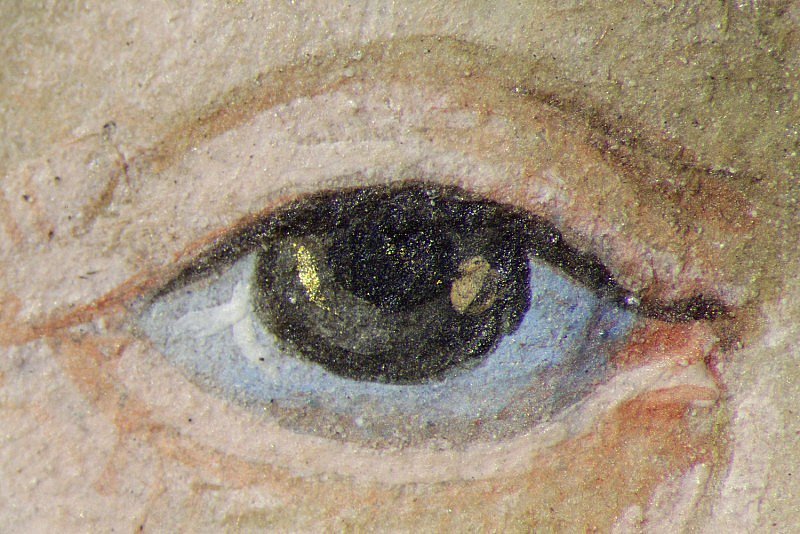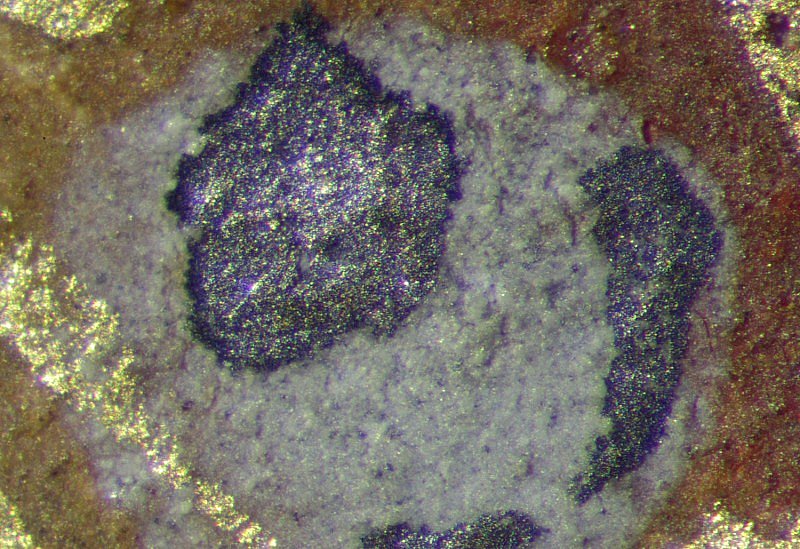Prayer Salve sancta facies
Texts and Images
Particularly popular in 15th-century Flemish Books of Hours, the prayer Salve sancta facies nostri redemptoris (‘Hail, O holy face of our redeemer’) promises admission to heaven at the end of time. It was believed to be most effective in reducing one’s ordeal in Purgatory by thousands of years if recited while looking at an image of Christ’s face. The full-page frontispiece of Christ’s image on the left (fol. 13v) faces the beginning of the text surrounded by a full border of peacock feathers on the right (fol. 14r). This, the first double opening, provides a grand entrance into the volume.


Christ as Saviour of the World (prayer Salve sancta facies)
This page was illuminated by the Painter of Additional 15677. Christ’s image is framed within an elaborately carved wooden structure casting shadows on the pink wall behind. It incorporates three-dimensional images of saints and the story of St Veronica painted in shell gold on a monochrome background, simulating a scene carved in relief. The frontispiece to the prayer ‘Hail, holy face’ fuses two popular devotional images – Christ as Saviour of the World (Salvator mundi), blessing and holding a crystal globe, and the Holy Face, Christ’s true image. The latter, not made by human hands, was miraculously imprinted on St Veronica’s cloth (known as the vernicle, sudarium or the Byzantine mandylion), when Christ wiped his face on the way to Golgotha.
Christ’s eyes reflect heavenly light, their glow painted in shell gold on one side, and a mixture of two luminous colours, vermilion and lead-tin yellow type I, on the other (hotspot 1). The globe is a pictorial study of reflection and refraction. Its silver highlights appear bright on the left side, but very dark – as if tarnished – on the right side. This may have been an intentional effect, aimed at conveying the three-dimensionality of this sphere. The dark grey outlines which decorate the grey gems in the medallion (hotspot 2) also contain silver.